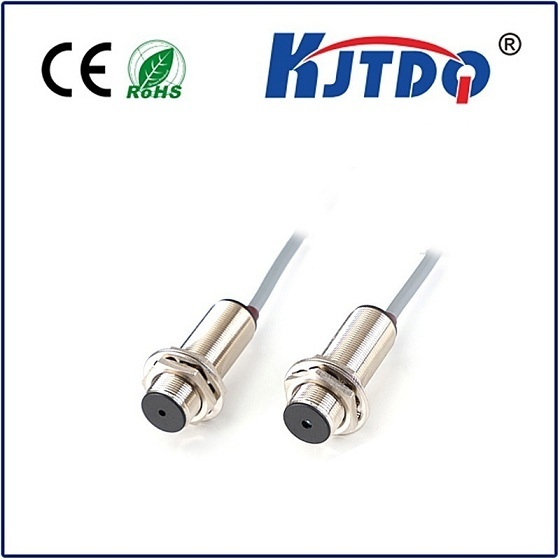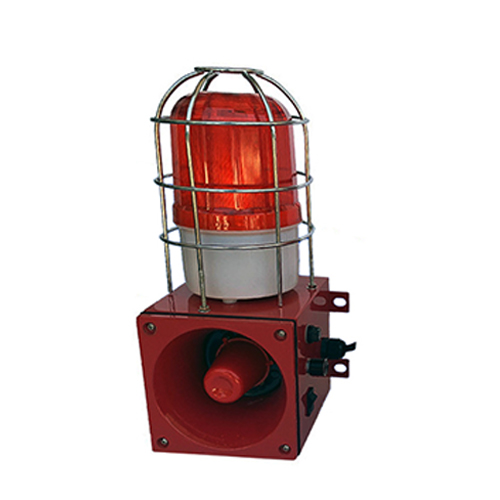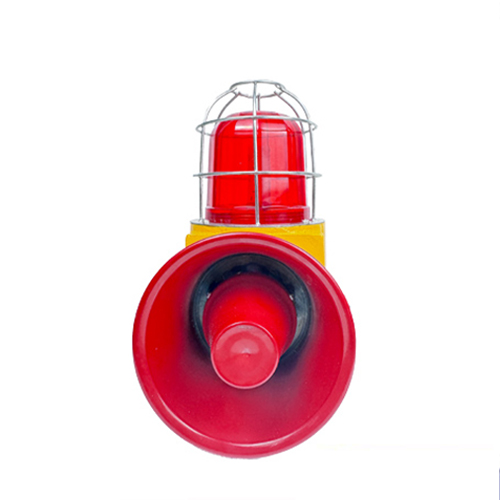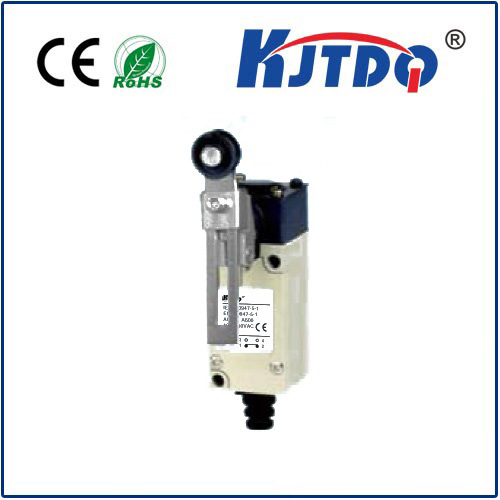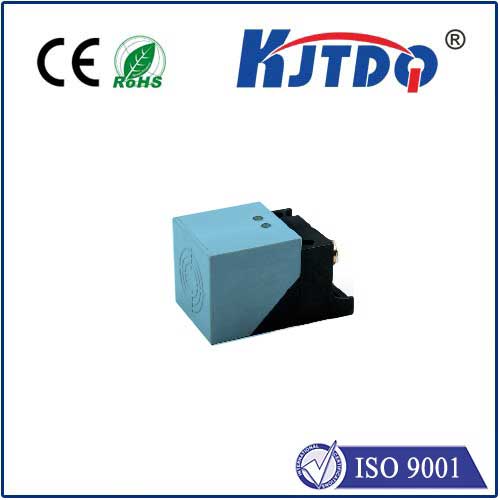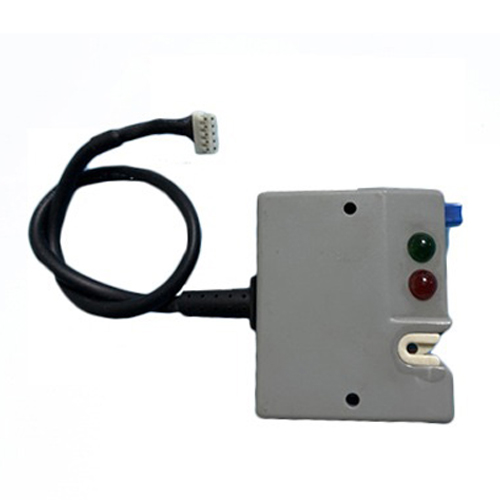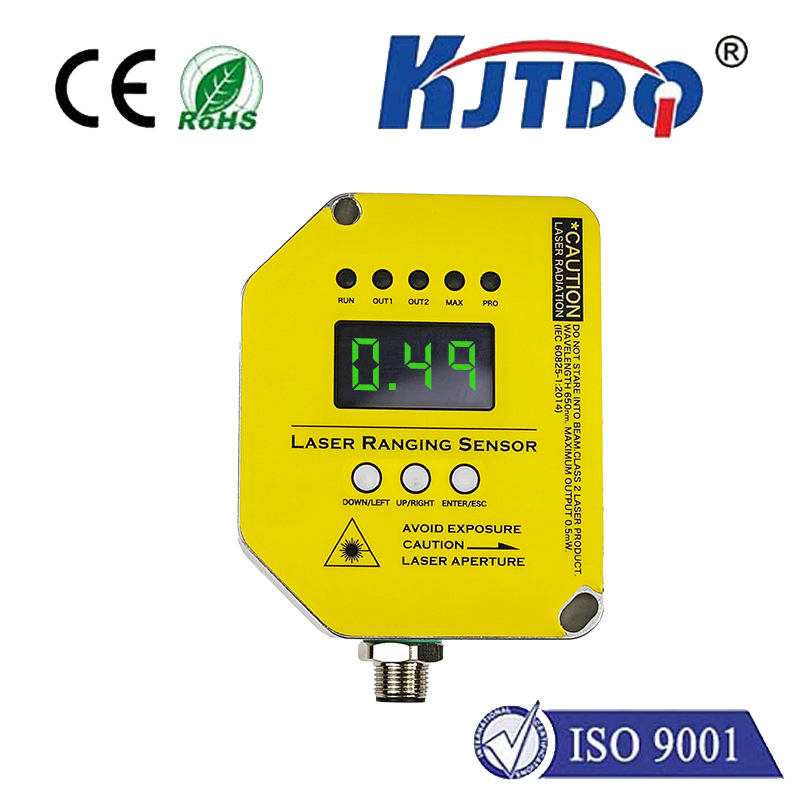rectangular proximity sensor
- time:2025-09-06 03:37:22
- Click:0
Rectangular Proximity Sensors: Why Geometry Matters in Detection Performance
Imagine a high-speed packaging line. Cartons zoom past, needing precise detection for labeling or sorting. A standard round sensor might struggle with consistently detecting the narrower edge of the box. Enter the rectangular proximity sensor. This isn’t just about aesthetics; its unique shape offers distinct advantages in countless industrial and consumer applications where maximizing sensing area in tight spaces or detecting specific profiles is critical. Understanding how and why these sensors work, and where they excel, is key to optimizing detection efficiency.
Proximity sensors, fundamentally, are workhorses of non-contact detection. They sense the presence or absence of an object without physical touch, using electromagnetic fields (inductive), electrostatic fields (capacitive), or light (photoelectric). Rectangular proximity sensors primarily leverage inductive or capacitive principles due to the feasibility of shaping their sensing fields into a more elongated profile. The core function remains the same: detect a target entering their sensing range and trigger an output signal. However, it’s the geometry of the sensing face that unlocks unique capabilities.
Why Choose a Rectangular Shape? The Core Advantages

The defining characteristic, the rectangular form factor, directly translates into tangible benefits:
- Maximized Sensing Area in Tight Spaces: Often, machinery design imposes severe space constraints, particularly in height or width. A rectangular sensor can be mounted where a larger circular sensor simply won’t fit, allowing engineers to place detection precisely where it’s needed. Instead of compromising location, they gain optimal positioning.
- Extended Detection Range Along One Axis: For applications where objects approach along a specific path (like conveyor edges, assembly tracks, or guiding rails), the longer side of the rectangle provides a significantly wider sensing zone. This increases the tolerance for object positioning variations, ensuring reliable detection even if an item drifts slightly.
- Optimized Target Profile Detection: This is crucial. When you need to detect the edge or a narrow face of an object (like a pallet lip, PCB edge, sheet metal side, or the thin spine of a book), a standard round sensor might have insufficient reach or require awkward mounting. A rectangular sensor, oriented correctly, aligns its long sensing axis perfectly with the target’s profile, dramatically improving reliability and consistency.
- Reduced Shadowing: In applications featuring dense arrays of sensors or complex machinery nearby, the elongated shape can sometimes minimize “shadowing” – where an adjacent structure inadvertently blocks a circular sensor’s field. The rectangular profile offers more directional flexibility.
- Improved Integration: The flat sides of a rectangular housing often facilitate easier and more secure mounting against flat surfaces, guide rails, or within machined slots, simplifying installation and ensuring stability.
How They Work: Inductive and Capacitive Principles
- Inductive Rectangular Proximity Sensors: These detect electrically conductive metal objects (steel, aluminum, brass, etc.). An oscillator generates a high-frequency electromagnetic field emanating from the active sensing face. When a conductive target enters this field, it induces Eddy currents on the target’s surface. This current absorption dampens the oscillator’s amplitude. The sensor’s circuitry detects this dampening effect and switches the output state. Hysteresis ensures stable switching by providing a small gap between the switch-on and switch-off points, preventing chatter near the sensing threshold. The rectangular coil design concentrates the field along its length.
- Capacitive Rectangular Proximity Sensors: These detect a much wider range of materials: metals, plastics, wood, liquids, powders, glass, and more. They function based on changes in capacitance. The sensor face acts as one plate of a capacitor. The target acts as (or influences) the other plate. The air gap is the dielectric. As a target approaches, the capacitance between the sensor plate and the target increases. The sensor’s circuitry monitors this capacitance. When it reaches a preset threshold (indicating the target is within the sensing range), the output switches. The rectangular electrode allows for broader material detection coverage along the sensor’s length.
Where Geometry Makes a Difference: Key Applications
The unique advantages of rectangular proximity sensors make them ideal for specific scenarios beyond the capabilities of their round counterparts:
- Conveyor Edge Detection: Reliably detecting packages or pallets moving along a conveyor belt, especially their narrower edges, preventing jams or ensuring proper positioning for sorting.
- Pallet Handling & Warehousing: Sensing pallet lips or forks in automated storage and retrieval systems (AS/RS), ensuring precise location for loading/unloading. The shape fits perfectly along racking guides.
- Printing & Paper Handling: Detecting the leading or trailing edge of paper stacks, sheets, or cardboard boxes in printers, copiers, and bindery equipment. Essential for accurate feeding and registration.
- Machine Tooling: Monitoring tool presence, workpiece positioning, or protective door status on CNC machines, lathes, and mills where space around the work envelope is extremely limited.
- Assembly Line Verification: Ensuring components are correctly placed within jigs or fixtures before the next assembly step, detecting thin features or specific orientations. The robust sensing zone catches misalignments.
- Mobile Machinery: Position sensing in compact spaces within agricultural, construction, or material handling equipment (e.g., bucket position, attachment detection).
- Counting and Sorting: Accurately counting thin objects like sheets, panels, or cards moving along a path. The extended range increases counting accuracy.
- Liquid Level Detection (Capacitive): Monitoring the level of various liquids in tanks or containers through non-metallic walls, where the rectangular shape suits level switch mounting profiles.
Choosing the Right Rectangular Sensor: Key Considerations
Selecting the optimal sensor requires careful evaluation:
- Sensing Principle: Inductive for metals only? Or Capacitive for non-metals, liquids, and diverse materials? Be mindful of capacitive sensor sensitivities to environmental factors like moisture or dust.
- Sensing Range (Sn): Crucial specification. Ensure the rated range meets your application’s distance requirements. Remember actual range can be affected by target material (inductive) or dielectric constant (capacitive).
- Housing Material & Protection Rating (IP): Metals like nickel-plated brass or stainless steel offer high durability. Plastic housings are common for capacitive sensors. Choose the appropriate Ingress Protection (IP) rating (e.g., IP67, IP69K) for dust, water washdown, or corrosive environments.
- Output Type: PNP (sourcing), NPN (sinking), NO (Normally Open), NC (Normally Closed) – select based on your PLC or controller input requirements. Analog outputs (for distance measurement) are also available.
- Size and Mounting: Verify the exact dimensions and required mounting style (flush, non-flush, specific brackets) to fit your available space. The thinner profile of many rectangular sensors is a key advantage.
- Target Material and Size: For inductive sensors, target conductivity and size impact performance. For capacitive sensors, the material’s dielectric constant is vital. Ensure the target interacts sufficiently with the sensor’s field, especially leveraging its length.
Optimizing Performance in the Real World
- Mounting Matters: Follow manufacturer guidelines for flush vs. non-flush mounting. Surrounding metal (ferrous for inductive) can significantly reduce the sensing range in flush mount situations. Non-flush mounting offers longer ranges but requires space around the sensor.
- Understand Hysteresis: This built-in tolerance prevents output oscillation when a target is right at the sensing boundary. Factor it into positioning requirements.
- Mind the Environment: Temperature extremes, chemical exposure, strong electromagnetic interference (EMI), or excessive vibration can impact






